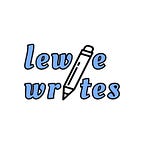Resources For Genderfluid Individuals
Ever just feel like you don’t belong to the male and female band completely? Want to go between the two, or even be neither? Then you might find these resources useful. Whether you’re a seasoned genderfluid individual, or you’re just finding your feet in the complex and fluid world of gender identity, these are the resources for you.
All The Genders — Gender Wiki
From the binary genders to traditional Hijras, this wiki has extensive information on all the various gender identities out there. They show you all the flags, as well as the history behind that gender. The wiki has a brief but insightful page on genderfluidity, and all the wiki pages take this simplistic, easy-read format.
The wiki doesn’t just discuss different gender identities, but it lets us know about concepts such as androgyny, masculinity and feminity, and is excellent for getting yourself and others educated on the subject of gender. Take a gander at the gender wiki!
Healthline manages to capture the fluid nature of the genderfluid identity perfectly, through this information article. It highlights key differences between genderfluid and genderqueer, and informs readers that genderfluid means that a person’s gender is… well… fluid and dynamic.
It takes a healthy, fact-lead stance on the issue. It’s not biased and it is a must-read for anyone who is questioning their identity, or has had a friend or family member come out as genderfluid.
Gender Psychology — Psychology Today
I really liked this article, as it gave a factual explanation of genderfluid and other non-binary identities. It didn’t condescend or be rude towards genderfluid people in any way. And it explains something most non-binary-phobic people forget:
Accepting GQs for who they are doesn’t mean we have to give up our own binary sex/gender world; it just means that we shouldn’t impose it on everyone.
Wanna Write? — Scottish Book Trust
Genderfluid is a gender identity which falls under the ‘non-binary’ umbrella, and writing about non-binary and genderfluid individuals can be daunting, when doing it for the first time. Whether you’re writing a future New York Times best-seller, a persuasive essay or a piece of journalism, the Scottish Book Trust has you covered.
Better known as the charity which host the First Minister’s Reading Challenge, they have some good tips and tricks to ensure that you use inclusive language and create characters that don’t just fall into the ‘androgynous gender-centric’ stereotype that too many non-binary and genderfluid characters fall into.
For a perfect example on how to depict genderfluid characters, read the Rain webcomic by Jocelyn Samara. Take a look at the Ky/Kylie character Rain is friends with and see how their character isn’t centred around their genderfluid identity.
Get Educated — Harvard Business Review
Non-binary identities have existed for hundreds of years, and there is an amalgam of evidence to back up my wild claim. However, try telling that to anyone in business, government, or that has influence in the way our society is ran. Gender hasn’t changed, but the way society thinks of gender is changing.
While companies such as Apple and Google are ‘progressive’ when it comes to their understanding of transgender individuals, genderfluid individuals are generally pushed to the way-side while companies try to promote their oh-so-progressive policies.
However, we’re the generation that can break the status quo and put genderfluidity and non-binary policies at the forefront of company policy-making. We can do this. But first, we need to get educated. Harvard Business Review brought out a massively insightful article towards the end of last year, and it highlights how gravely genderfluid and non-binary individuals have been failed by company policy making.
And while reading an article may not seem much, it sows the seeds needed in someone’s mind to recognise that there are systemic failings taking place in almost every company, internationally.
Respect Your Friends — National Centre for Transgender Equality
Some of you may be reading this as someone who is cisgender and heterosexual, and that’s okay. Some of all fall quite neatly into the binary, and that is completely fine. But you may have had a friend come out as genderfluid or non-binary.
It may seem a little bit daunting at first, and you don’t want to feel like you’re walking on egg-shells around your non-binary friends, hoping not to offend them. The National Centre for Transgender Equality curated some helpful tips to allow you to be respectful and understanding of your friend’s identity.
Don’t worry about offending a non-binary and genderfluid person, most understand that their identity is not well-known, and people may not understand the correct language to use at first. However, educating yourself is a massive step forward and will help them and yourself.
It’s They/Them — I Heart Singular They
Too many times have I heard the following:
“They is gramatically incorrect!”
Ironically, this is from people who aren’t well-versed on the English language. Talking to English teachers, they all agree that they can be used to describe a singular person in a gender-neutral manner.
Sometimes, you will come across hostility when you tell someone your pronouns are they/them, but why not show them this website to shut them up in a polite and sophisticated way?
Gender is so much more complex than male and female, and I think it’s time we finally fully acknowledge this. If you or someone else you know is struggling with their identity, why not point them towards this article? And if you come across a resource I could potentially include, contact me on my contact form!
